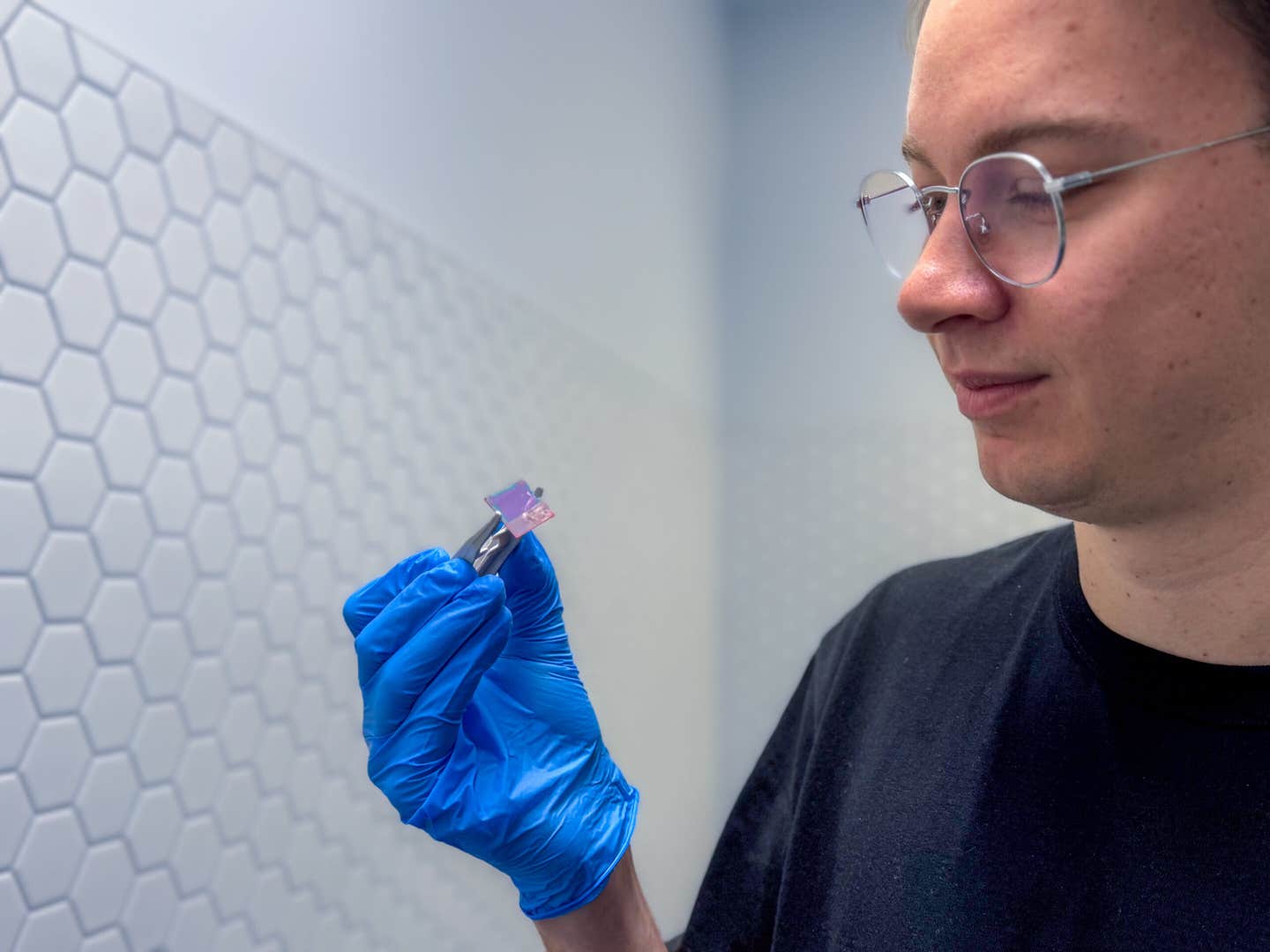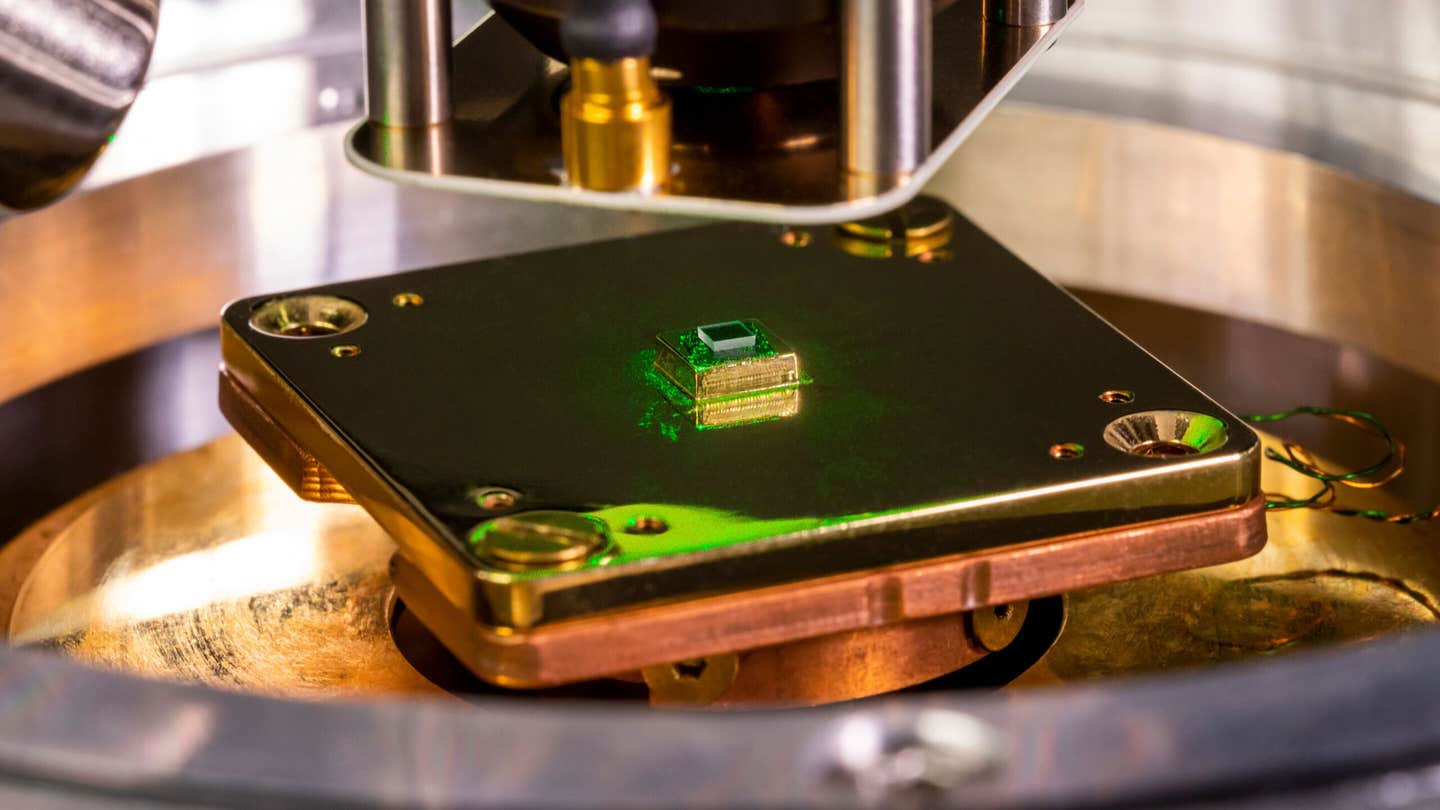New quantum battery breakthrough boosts energy storage by 1,000x
A new quantum battery design holds energy 1,000 times longer, marking a major step toward fast, efficient energy storage.

Scientists have extended quantum battery energy storage by over 1,000 times using molecular triplet states, solving a key limitation in design. (CREDIT: RMIT)
In the world of next-generation energy, researchers are taking a leap beyond chemistry into the strange rules of quantum mechanics. A new type of battery, known as a quantum battery, is no longer just a theoretical dream. Thanks to a team from RMIT University and Australia’s national science agency (CSIRO), the path toward efficient, ultrafast energy storage just got clearer.
Quantum batteries don't rely on chemical reactions like the lithium-ion versions powering your phone or car. Instead, they store and transfer energy using quantum systems—tiny building blocks like atoms, molecules, and light.
At their core, they use quantum effects like superposition and entanglement to potentially charge faster and perform better. Researchers believe these batteries could someday improve solar panels and power microelectronics.
But there’s been a big problem: while they charge quickly, quantum batteries have struggled to keep that energy for long. Earlier versions lost energy in a flash—within nanoseconds—making them impractical. Now, a new approach developed by scientists at RMIT and CSIRO has extended energy storage time by over 1,000 times, marking a major step toward real-world use.
The Challenge of Quantum Energy Storage
Traditional batteries have changed how we live, especially with their role in electric vehicles, smart devices, and the growing need to store solar and wind power. Still, they aren’t perfect. Lithium-ion batteries, the most common kind, degrade quickly and need frequent replacement. They’re also slow to charge and aren’t well-suited for advanced applications where speed and efficiency matter most.
Quantum batteries aim to solve these problems. The idea is to use excited states in atoms or molecules to store energy. Energy is then released by shifting those states through quantum transitions.
Because of the collective behavior of quantum systems, adding more particles doesn't just increase energy linearly—it can actually speed up charging through what’s known as a √N-fold boost. This quantum speedup means the more units you add, the faster the system charges.
Related Stories
The Dicke quantum battery is a model that embodies this idea. Named after physicist Robert Dicke, it involves a group of emitters interacting with light in a special structure called an optical cavity.
When done right, this setup allows for “superabsorption”—a rapid intake of energy. The more emitters inside the cavity, the faster the system charges. Scientists confirmed this in experiments using organic optical microcavities, where charging rates increased significantly with molecule number.
Turning a Weakness Into Strength
Superabsorption is powerful, but it comes with a downside. The same conditions that enable fast charging also trigger “superradiance,” a quick and enhanced discharge of stored energy. In earlier tests, this meant energy vanished almost as fast as it was stored. Attempts to reduce this discharge by introducing noise or disorder, called decoherence, only helped a little. To be useful, quantum batteries need a way to hold onto their charge longer.
The team at RMIT found that solution in a clever redesign. They built a battery with two separate layers inside a microcavity: one for charging, the other for storage. The charging layer uses superabsorption to rapidly collect energy. Then, that energy is transferred to a storage layer made of molecules with special properties called molecular triplet states.
Unlike regular singlet states that quickly release energy through light emission, triplet states are “dark.” They resist radiative decay due to rules about electron spin, which means they hold onto energy far longer. These states can keep energy stored for microseconds—or even minutes—depending on conditions. That’s a massive improvement over the previous nanosecond-scale lifetimes.
Testing and Results
To test their concept, the researchers created five versions of the device. Each had slightly different energy level alignments. Their goal was to find the configuration where the lower polariton energy (a mix of light and matter) matched the triplet state energy. When these two levels lined up perfectly, energy transfer was most efficient, and storage times peaked.
In the best-performing design, energy lasted for 40.3 microseconds—over 100 times longer than any previous quantum battery demonstration. This big jump confirms that decoupling energy capture from energy storage is key. It also validates the idea that dark states like triplet excitons are essential to future designs.
“While we’ve addressed a tiny ingredient of the overall piece, our device is already much better at storing energy than its predecessor,” said RMIT PhD candidate Daniel Tibben, a co-author of the study. He added that they are getting closer to creating a working quantum battery.
The team published their findings in PRX Energy, showcasing how their system pushes quantum battery research forward. Their results also lay the groundwork for building even better versions.
Looking Ahead to Quantum-Enhanced Energy
Study co-author and RMIT chemical physicist Professor Daniel Gómez highlighted the impact of the study. “While a working quantum battery could still be some time away, this experimental study has allowed us to design the next iteration of devices,” he said. The team is now working with industry partners to refine and improve future prototypes.
Leading quantum physicist Dr. James Quach, who helped pioneer earlier superabsorption experiments, also took part in this research. “Australia is leading the way in experimental quantum battery research and this work is a significant advancement,” Quach noted.
The batteries were built and tested at RMIT’s Micro Nano Research Facility. The facility brings together researchers from different fields to tackle complex problems in micro- and nanotechnology. Their success in controlling light-matter interactions and managing dark-state physics highlights the strength of this collaborative approach.
There’s still a long road ahead before these batteries are ready for mainstream use. But this study proves that it’s possible to combine fast charging with long-lasting energy storage using quantum systems. It also hints at a future where electronics can be powered by devices that are smaller, faster, and far more efficient than today’s options.
In time, this breakthrough may transform how energy is stored, especially in fields where speed and miniaturization matter. Whether it’s boosting solar panel performance or powering the next generation of wearables, quantum batteries now look more real than ever before.
Note: The article above provided above by The Brighter Side of News.
Like these kind of feel good stories? Get The Brighter Side of News' newsletter.



